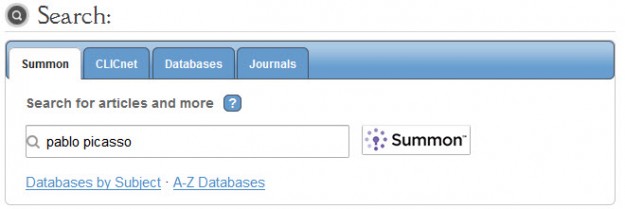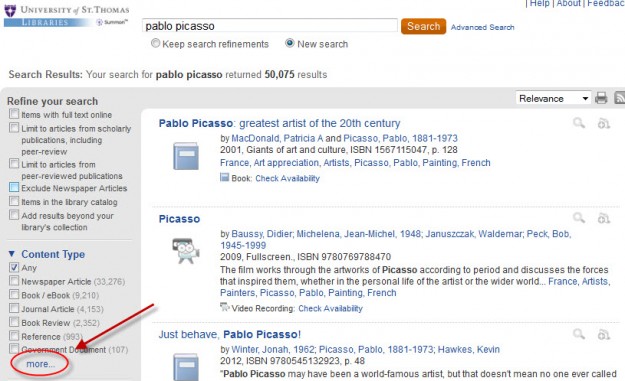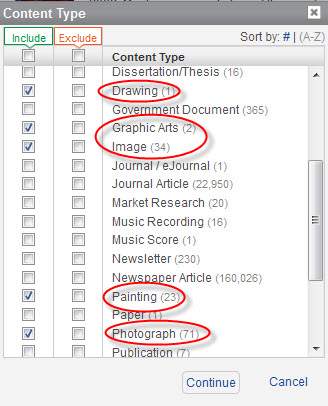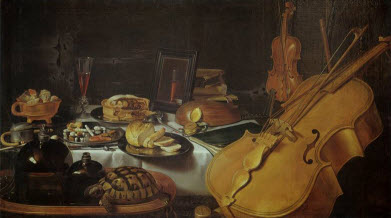Whenever you are looking for art, it’s easiest and fastest to search Summon for the artist’s name. Then you simply limit to painting or image (or art or drawing or photograph… you get my point). Here’s how it works. From the library homepage, use the Summon tab to search your artist:
I chose Picasso cuz he’s one of my favorites. Once you get the results, click MORE under CONTENT TYPE to limit to images.
Depending on the artist, you’ll have a lot of image types to choose from. Click as many as you like.
You might have to play with your pop-ups. If asked, permanently allow pop-ups from this provider.
You can even search by the title of a painting or photograph (or any type of work of art) if you’d like to get more specific. These images are coming mostly from ArtSTOR, which you can search separately. If you search ArtSTOR directly you can create albums (after you sign in) and save images to albums. You can also take ArtSTOR on the road with its mobile app. You have to first create an account in ArtSTOR in order to use the mobile app.
We have a lot of really cool art resources. For your one-stop shop on background information, you cannot go wrong with Oxford Art. It’s very thorough and includes the once-famous Grove Dictionary of Art & Artists. But Oxford Art is bigger than even Grove. If it’s articles you have a hankerin’ for, a quick search in Art Full Text will get you what you need. I already told you about ArtSTOR.
If you’re not keen on using multiple tools, just stay in Summon for all of your information needs. For example, if you want background info on an artist, choose REFERENCE as a content type. Reference is the same as dictionaries and encyclopedias. In the case of art, you’ll find articles from Oxford Art by searching Summon and limiting CONTENT TYPE to REFERENCE. If it’s articles, stay in Summon and limit to SCHOLARLY JOURNALS INCLUDING PEER REVIEWED. And if you want images, well… I already covered that.
This all actually came about because a student was recently looking for works by Pieter Claesz. There were 31 found in Summon. All paintings. Here’s one of ’em. When I limited to REFERENCE information, I found him mentioned in the “Encyclopedia of Death and the Human Experience” in an article called “Symbols of Death and Memento Mori.”




 For the next couple of months, Ireland Library will be highlighting our (growing)
For the next couple of months, Ireland Library will be highlighting our (growing)